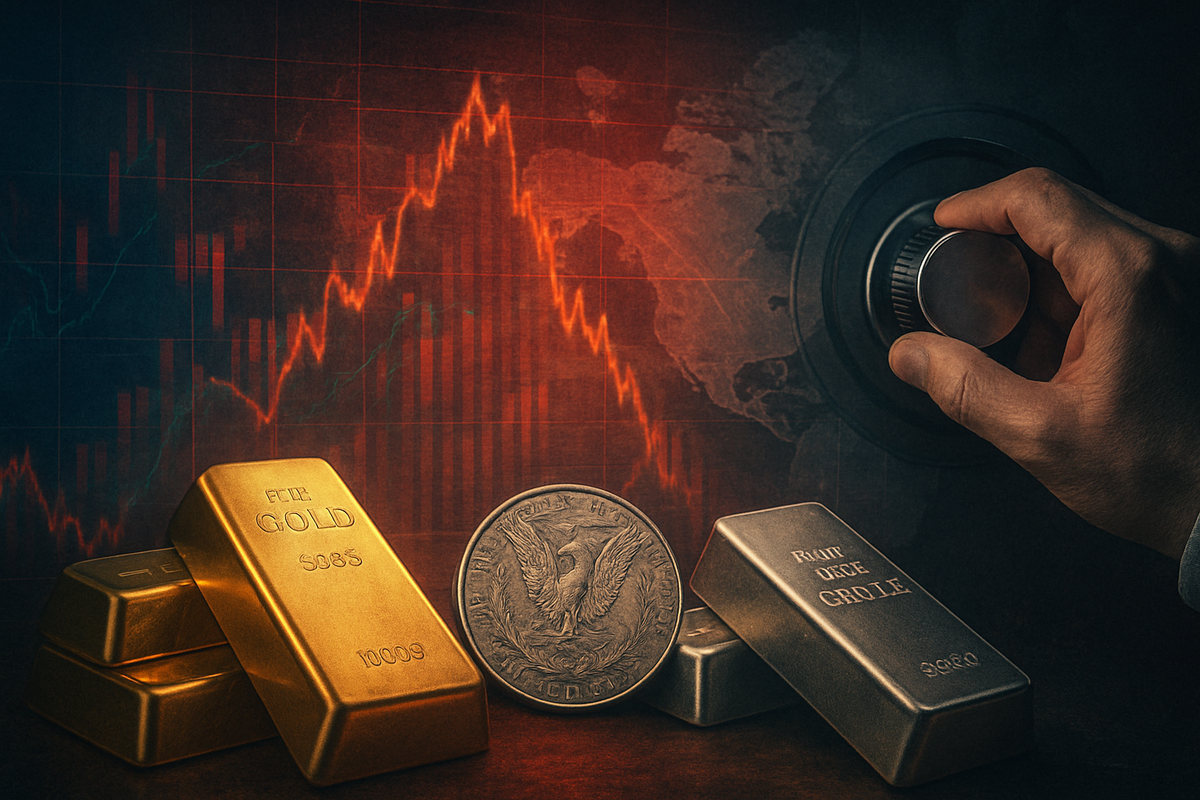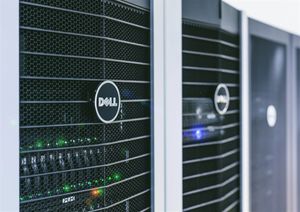
As of November 2025, the precious metals market, particularly gold and silver, is experiencing a significant surge, driven by a complex interplay of global economic cues. A confluence of factors, including the anticipation of a Federal Reserve interest rate cut, persistent geopolitical instability across various regions, and a discernible weakening of the US dollar, has collectively fostered a bullish environment for these traditional safe-haven assets. This robust performance comes despite periods of short-term volatility and consolidation, underscoring the metals' enduring appeal in times of uncertainty.
Gold prices have recently climbed to a two-week high, hovering between $4,078 and $4,084 per ounce, following an impressive year-to-date gain exceeding 50% in 2025. This surge saw gold peak at an all-time high of approximately $4,381.58 in October before a modest correction. Similarly, silver has demonstrated remarkable strength, soaring to around $50 per ounce, a three-week high, and boasting a staggering 73.7% year-to-date gain. These movements highlight investors' increasing flight to tangible assets amidst a landscape fraught with economic and political uncertainties, signaling a broader "debasement trade" where hard assets are favored to hedge against systemic risks and currency devaluation.
The Confluence of Factors Driving Precious Metals
The current rally in gold and silver is not accidental but a direct consequence of several critical global developments. A detailed examination reveals the specific triggers and their unfolding timeline.
The Federal Reserve's monetary policy has emerged as a primary catalyst. As of November 2025, there is a strong market expectation of an interest rate cut in December. This dovish pivot is largely influenced by a series of weak US economic indicators, including significant job losses reported in October, a sharp decline in consumer sentiment to near record lows in November, and an ongoing, prolonged government shutdown. Lower interest rates inherently reduce the opportunity cost of holding non-yielding assets like gold and silver, making them more attractive to investors seeking returns. Market participants are currently pricing in nearly a 70% chance of a December rate cut, a sentiment that has been building over recent months despite earlier hawkish rhetoric from the central bank.
Geopolitical instability continues to fuel demand for safe-haven assets. Ongoing international conflicts, particularly in Eastern Europe and the Middle East, sustain a pervasive "risk-off" environment, prompting capital flows towards gold and silver. The protracted US-China trade war also remains a significant unpredictable force; escalating tariffs, such as the 145% on Chinese imports in April and a proposed 100% increase in October, have consistently triggered spikes in gold prices. Furthermore, the longest US government shutdown in history, exceeding 40 days as of November 2025, has introduced profound economic uncertainty, negatively impacting economic output and obscuring vital economic data. This has undeniably pushed investors towards the perceived safety of precious metals. Key players involved include global central banks, which have been consistent net buyers of gold for 16 consecutive years, diversifying their reserves away from the US dollar and mitigating geopolitical risks, thereby providing a robust demand floor for gold prices.
While specific inflation data for November 2025 is still anticipated (with the US October Consumer Price Index (CPI) inflation data expected later in the week), the underlying theme of "still-sticky inflation" and gold's traditional role as an "inflation hedge" remains highly relevant. Investors view gold and silver as critical hedges against inflation and potential currency debasement, especially in an environment characterized by fiscal dominance in major economies. The expectation that nominal interest rates minus inflation expectations will approach zero or even negative territory further enhances the appeal of non-yielding assets like precious metals. Initial market reactions to these combined factors have been overwhelmingly positive for gold and silver, with both metals experiencing substantial price appreciation and increased trading volumes.
Companies Poised to Win or Lose in the Precious Metals Rally
The current bullish trend in gold and silver prices, fueled by inflation, geopolitical events, and the Federal Reserve's dovish stance, presents a generally favorable but nuanced outlook for major mining companies. While higher commodity prices promise increased revenues, inflationary pressures simultaneously drive up operational costs, making efficient management and cost control paramount.
Among the prominent gold producers, Newmont Corporation (NYSE: NEM) stands as a significant winner. Despite projecting relatively flat core asset production for 2025 due to lower-than-anticipated output from recently acquired mines, Newmont's strategic cost reductions have allowed it to maintain an All-in Sustaining Cost (AISC) around $1,620 per ounce for 2025. This, combined with high gold prices, generated a record free cash flow of $1.6 billion in Q3 2025. Although its valuation is near historical highs, Newmont's scale and disciplined cost structure position it to capitalize substantially on the elevated gold market.
Barrick Gold Corporation (NYSE: GOLD) is also well-positioned to win. While its 2025 gold production forecast is at the lower end of its guidance due to asset sales, Barrick's strong financial footing and increasing gold prices support a healthy earnings outlook. Its Q3 2025 gold production saw a 4% increase, and despite projected AISC of $1,510-$1,610 per ounce (including royalty impacts), the company's stock has rallied 41% in the three months leading up to November 2025, appearing attractively valued. Agnico Eagle Mines Limited (NYSE: AEM) is another clear winner, projecting 2025 gold production between 3.3 and 3.5 million ounces with a highly competitive AISC of $1,250 to $1,300 per ounce. The company reported record quarterly profit and free cash flow in Q3 2025, benefiting from expanded margins and a strengthened balance sheet. Similarly, Kinross Gold Corporation (NYSE: KGC) has seen its profitability surge. Despite increased unit costs and a slight dip in Q3 production, Kinross's Q3 2025 revenue rose 26% to $1.80 billion, with net earnings jumping by 65%, demonstrating that the significantly higher realized gold prices are outweighing operational cost pressures.
In the silver mining sector, Pan American Silver (NYSE: PAAS) is set to be a significant beneficiary. Forecasting 20-21 million ounces of silver production for 2025, boosted by the early 2025 acquisition of MAG Silver and its Juanicipio mine, the company anticipates a drop in silver segment AISC to $16.25-$18.25 per ounce. This strategic growth, combined with robust silver prices, is expected to drive increased revenue and profitability. Hecla Mining (NYSE: HL) is also a strong winner, reaffirming its 2025 silver production targets and revising down its AISC guidance to $6.50 to $7.25 per silver ounce. Hecla reported record financial performance in Q3 2025, with revenue of $409.5 million, largely due to strong operational performance and favorable by-product credits at its Greens Creek operation. First Majestic Silver (NYSE: AG) has also demonstrated robust performance, with a 76% year-over-year increase in Q2 2025 silver production and record quarterly revenue of $264.2 million, driven by its Los Gatos operation.
While no major listed companies are outright "losers" in this high-price environment, those facing greater challenges include high-cost producers whose margins are more severely eroded by inflation, companies with heavy debt burdens that could become problematic if interest rates were to rise unexpectedly, and those with significant operational concentrations in politically unstable regions, which face higher risks of disruption. However, the current market dynamics overwhelmingly favor well-managed, efficient miners with diversified portfolios and strategic growth initiatives.
Wider Significance: A Return to Traditional Safe Havens
The extraordinary rally in gold and silver prices as of November 2025 transcends mere market fluctuations; it signifies a profound shift in global economic sentiment and a potent affirmation of precious metals' enduring role as safe-haven assets. This phenomenon fits squarely within broader industry trends, creating ripple effects across the mining sector, prompting regulatory considerations, and echoing powerful historical precedents.
The broader precious metals market is on a trajectory of substantial growth, with an estimated value of $327.47 billion in 2025, projected to reach $533.12 billion by 2032. While gold and silver lead this charge, other precious metals like platinum and palladium are also seeing increased demand, particularly due to their critical applications in green technologies. Geographically, the Asia Pacific region is expected to dominate, holding an estimated 52% market share in 2025, driven by robust industrial demand and supportive government policies in economic powerhouses like China and India. However, the emergence of cryptocurrencies as speculative alternative investments presents a new dynamic, potentially diverting capital that might traditionally flow into gold. Innovations such as tokenized gold and silver assets are also bridging the gap between traditional commodities and modern digital finance.
The surge in precious metal prices has a significant positive ripple effect throughout the mining ecosystem. Gold and silver mining companies are experiencing not only increased revenues but also expanded profit margins, incentivizing aggressive exploration, development, and strategic expansions. This robust pricing environment validates earlier-stage projects, allowing for their advancement without undue shareholder dilution. Strong cash flows empower established producers like Newmont, Barrick Gold, and Agnico Eagle to make strategic investments and acquisitions. Furthermore, the high prices for gold and copper concentrates are attracting considerable interest from "offtakers," further bolstering the financial health of the sector and its partners.
Regulatory and policy implications are also at play. Central banks' sustained accumulation of gold is partly influenced by international regulations like Basel III, which classifies gold as a high-quality liquid asset, thereby encouraging its holding as a reserve. Conversely, Environmental, Social, and Governance (ESG) regulations are increasingly creating headwinds for mining companies, influencing investment decisions and shaping future operational requirements through heightened scrutiny. The ongoing, protracted U.S. government shutdown significantly impacts market sentiment, driving demand for safe-haven assets. Proposed trade policies, such as potential tariffs, could further disrupt global supply chains, exacerbate inflation, and consequently boost demand for precious metals, while a potential rejection of these tariffs by the U.S. Supreme Court, while easing tensions, could also worsen the U.S. debt situation, historically a supportive factor for precious metal investments.
Historically, gold has consistently served as a reliable safe haven, preserving or increasing its value during periods of economic and geopolitical crises, inflation, and financial turmoil. This pattern was vividly demonstrated during the Great Depression, the 2008 Financial Crisis, and the COVID-19 Pandemic, all of which saw significant gold price surges. Gold also acts as a traditional hedge against inflation, typically performing well when inflation exceeds 3%, though this relationship can be complex. The psychological security derived from owning a tangible asset during instability further reinforces its appeal. The current market behavior in 2025, with precious metals performing robustly amidst global economic and political turbulence, strongly echoes these historical precedents, underscoring their time-tested resilience.
What Comes Next: Navigating a Bullish Horizon
The trajectory of gold and silver prices in the coming months and years will continue to be shaped by the powerful forces of inflation, geopolitical instability, and the Federal Reserve's monetary policy. While short-term volatility is anticipated, the long-term outlook for precious metals remains robustly bullish, presenting both opportunities and challenges for investors and industry players alike.
In the short term (late 2025 - early 2026), gold and silver prices are expected to remain volatile but with a strong upside bias. Gold, currently trading near $4,055, is testing resistance, with a sustained break above $4,085 potentially leading towards $4,142 and $4,180. Silver, near $49.31, is similarly poised for an advance towards $50.64 and $52.00 if it decisively breaks key resistance. Both metals are currently undergoing consolidation phases, which, when supported by strong fundamental factors, often precede significant upward breakouts. This period of reduced volatility is seen as a coiled spring, building energy for the next leg of the rally.
Looking further ahead (2026 and beyond), the long-term outlook for both metals remains exceptionally strong. Gold is widely projected to approach or even surpass $5,000 per ounce by late 2026 or 2030, driven by structural trends and continued investor demand. Silver's prospects are even more aggressive, with professional forecasts targeting $59 per ounce by late 2026, and some analysts predicting it could surge past $100 per ounce in the medium term, fueled by persistent supply deficits and burgeoning industrial demand from sectors like renewable energy and electric vehicles.
Strategic pivots for investors should include continued portfolio diversification, utilizing precious metals as a hedge against economic downturns. Dollar-cost averaging during price dips can mitigate volatility, while ratio trading between gold and silver can optimize returns depending on market phases. Geographic diversification for physical assets can also hedge against political risks. For companies, strategic acquisitions of high-grade assets, continued focus on cost control, and leveraging by-product credits will be crucial for sustained profitability.
Market opportunities are abundant, primarily driven by continued robust central bank demand for gold (projected 900-1000 tonnes in 2025) as nations diversify reserves and de-dollarize. Silver's significant industrial demand, especially from green technologies, ensures a strong fundamental floor, contributing to its seventh consecutive year of supply deficits. These deficits, coupled with the "buy the dip" mentality among long-term investors, underscore the current market's resilience. However, challenges persist, including inherent price volatility (especially for silver), potential regulatory changes (e.g., China's VAT policies for gold), and the ever-present risk of a stronger U.S. dollar or an unexpected hawkish shift in Federal Reserve policy. The most likely scenario remains a continued bullish trend, supported by geopolitical uncertainties and anticipated Fed easing, with high inflation/stagflation scenarios further bolstering gold's appeal.
Comprehensive Wrap-up: A New Golden Era?
In summary, the current financial landscape, marked by persistent inflation, widespread geopolitical instability, and a dovish tilt from the Federal Reserve, has unequivocally ushered in a new era for precious metals. Gold and silver, long considered traditional safe havens, are not just performing well; they are leading a significant market reorientation as investors seek refuge from systemic risks and currency debasement. The robust rallies seen in 2025, pushing both metals to new highs, are a clear testament to their enduring value proposition.
Moving forward, the market for precious metals is expected to remain highly dynamic and fundamentally strong. The interplay of weakening economic data in the U.S., the strong likelihood of a Federal Reserve interest rate cut in December 2025, and the relentless drumbeat of global conflicts and trade tensions will continue to drive capital into gold and silver. Central banks, recognizing gold's role as a high-quality liquid asset under regulations like Basel III, are expected to remain significant net buyers, providing a crucial demand floor. For silver, its dual role as a monetary metal and an indispensable industrial commodity (especially in green technologies) ensures a unique and powerful demand profile, contributing to persistent supply deficits that could drive prices even higher.
The lasting impact of this period could be a fundamental revaluation of precious metals within global portfolios, moving them from peripheral hedges to core strategic assets. This shift reflects a growing distrust in fiat currencies and traditional financial instruments amidst unprecedented levels of government debt and monetary expansion. The current environment validates the long-held belief that gold and silver offer tangible security when confidence in other assets wanes.
Investors should closely watch for several key indicators in the coming months. The Federal Reserve's December meeting will be paramount; any deviation from the anticipated rate cut could introduce short-term volatility. Further inflation data, particularly the US October CPI, will provide crucial insights into the persistence of price pressures. Geopolitical developments, especially regarding ongoing conflicts and the US-China trade relationship, will continue to serve as significant market drivers. Finally, monitoring the US dollar's strength will be essential, as a weakening dollar historically boosts the appeal of dollar-denominated commodities. For those seeking stability and growth in uncertain times, the allure of precious metals appears set to shine even brighter.
This content is intended for informational purposes only and is not financial advice






